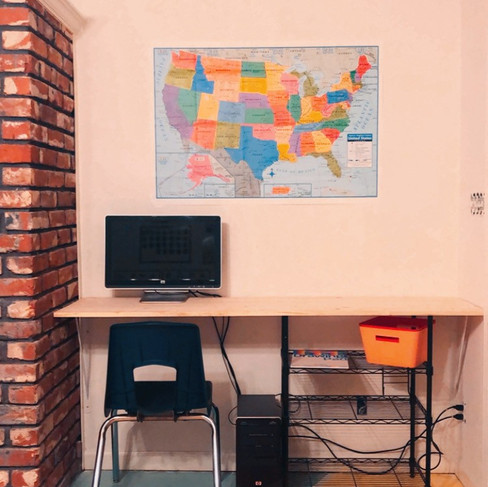Homeschooling in Small Spaces
- lampandspindle
- Oct 1
- 2 min read
Want to homeschool but think your space is just too small? Think again. We’re now in our seventh year of homeschooling, and we’ve learned one thing for sure: learning doesn’t depend on square footage. From a dining room table to an RV, we’ve tried it all—and the outcome has always been the same: we get to do life with our children while watching them learn and grow.

Our Journey Through Different Learning Spaces
Dining Room & Office Conference Table
Our first year was split between home and my father’s office, where I was still working part time. Having that flexibility made the transition into homeschooling smoother, even without a dedicated space.
Dedicated School Room
For three years we enjoyed a bigger home with desks, a reading nook, and storage—and while it was nice to keep supplies out of sight, it wasn’t essential to learning or success.
RV Life
Traveling meant the smallest space yet, but learning thrived through bookwork, museums, national parks, and new towns. It proved that curiosity and experiences matter more than square footage.
Townhouse Kitchen Table
When we rented a townhouse, our kitchen table became our classroom. Simple and practical, it worked perfectly for our season of life.
Today’s Setup
Now we live in a house just under 1200 sq ft, homeschooling mostly at the kitchen table. On town days, we love our coffee shop “classroom”—a spot where my son zips through assignments. Once, he even said he wanted to work there someday—not as a barista, but with a remote job while enjoying the environment. (Funny how kids know that's an option these days!)
Homeschool Essentials for Any Space

No matter your setup, a few basics will carry you through:
Writing & Art Supplies: pencils, pens, crayons, markers, paint sets
Paper: notebooks, drawing pads, blank paper
Trays, Baskets & Bins: keep supplies and books organized
Planner & Binders: track assignments and file student work
White Boards & Dry Erase Markers: for daily schedules, math practice, and brainstorming
Scissors, Tape, Hole Punch, Glue: simple tools for endless creativity
Curriculum: tailored to your space and your family’s needs
A Note on Record-Keeping
Not every family tracks assignments, but I choose to. Each child has a yearly binder with subject dividers where I file work weekly, and I log daily work in a planner. It helps with reporting, peace of mind, and keeping a record of growth.
The Bottom Line
A homeschool room is wonderful, but not necessary. With a few core supplies and the willingness to adapt, you can homeschool in any space. Whether you’re at a kitchen table, a coffee shop, or on the road, what matters most is creating an environment where your children can thrive.
Bible Verse of the Day:
Children are a heritage from the Lord, offspring a reward from Him. Like arrows in the hands of a warrior are the children born in one's youth. Blessed is the man whose quiver is full of them! Psalm 127:3-5




























Comments